- Administrator
- Albums and Singles
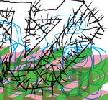 Et Sans latest release (and first) on Canadian label Alien 8 is analbum that finds the band pushing themselves in familiar yetchallenging directions. The four tracks here burst at the seams withideas and inventiveness, all while managing to remain uniquelyaccessible to those unfamiliar with their influences.
Et Sans latest release (and first) on Canadian label Alien 8 is analbum that finds the band pushing themselves in familiar yetchallenging directions. The four tracks here burst at the seams withideas and inventiveness, all while managing to remain uniquelyaccessible to those unfamiliar with their influences.
Though the Montreal quintet features members of such well establishedgroups like Le Fly Pan Am, Shalabi Effect, and A Silver Mt. Zion, thisis hardly a stepping stone for the band. Instead of falling backon those groups' varied approaches, Et Sans mines the realm of the late1960s and 1970s, touching on Suicide’s keyboard vamps, Kraut Rock,psychedelia, and baroque pop. The first track, “Lachose Nue Nue Nue Oul'Amoncellement Spectral du Mac,” begins with slowly percolating beats,with distant murmuring voices and washes of ambient static. The 18 plusminute centerpiece “Une Bouche Végétale, Des Creatures Soufflent desSécrétions du Tout Fout l” follows and immediately dispels the eeriecalm established by the last song. Over an unrelenting Farfisa,manipulated vocals, shrieking electronics, and pounding drum, the songreaches its noisy zenith until slowly fading out to just a groaningkeyboard and a drum and handclap providing the rhythm at about theseven minute mark. As the track progresses, it slowly begins to pick upthe pace, until it has regained the tempo it utilized in its firstsection. Whereas earlier the vocals were hidden behind a gauze ofelectronic manipulation, they are more prominent here, with the leadvoice intoning mantra like verses while backing vocals provide cheerful“bah, bah, bah’s.” The song in many ways resembles early New Yorkkeyboard noise mongers Suicide, but also draws comparison to Stereolabin its extended length, and sublime pop frenzy. “Made Moiselle Ogive,Un Tremblement Osseux Dans Lederriére” manages to match the intensityof the previous song through the usage of one percussive piano chordwhich provides the rhythm for much of the song. The delicate sense ofurgency is increased by more classical instrumentation, such as a harp,backing strings and hushed vocals, all of which infuses the song with abeautiful haunting quality. The final track is perhaps Et Sans mostaccessible. “Les Courbes Sanglantes Entendues de l'Organe Trop UraímentHalluciné” is built on Felix Morel’s capable drumming, which drives thesong over its 11 minute course through a panoply of keyboard, breathyvocals, and squirming electronics. While some may balk at their lengthand unwavering rhythm, they are really missing the point. Par NoussssTouss les Trous de Vos Crânes! is an album that manages to skillfullybalance Et Sans predilection for the experimental and the accessible,making for a challenging and infinitely rewarding listen.
samples:
Read More
- Administrator
- Albums and Singles
 Did you ever wonder where Grace Jones and Miss Kittin learned all their moves? Look no further than Gina X Performance's 1979 electro new-wave classic Nice Mover. This, along with their follow-up, X-Traordinaire, have been reissued by LTM and given the special LTM treatment with restored artwork and bonus tracks.
Did you ever wonder where Grace Jones and Miss Kittin learned all their moves? Look no further than Gina X Performance's 1979 electro new-wave classic Nice Mover. This, along with their follow-up, X-Traordinaire, have been reissued by LTM and given the special LTM treatment with restored artwork and bonus tracks.The album—and most especially its two highly influential club singles "Nice Mover" and "No G.D.M."—is ground zero for the combination of cold-wave electro, cocaine-fueled disco sleaze, dark cabaret and genderbending performance aesthetics that would come to dominate the Berlin and NYC scenes during the early 1980s, and then again in the late 1990s. The core of the band was vocalist and lyricist Gina Kikoine, fashionable art school dyke, and writer-producer-musician Zeus B. Held (of Kraut-proggers Birth Control), who met and formed Gina X Performance in Cologne, Germany. Their name was presumably meant to encapsulate the very strong visual performance aspect of their music, as well as the frequently provocative sexuality and transgenderism that was a fixation for the group. Gina's masculine vocals are wry and world-weary, retaining her native German accent, the perfect specimen of decadent, detached, unattainable Eurotrash. Her lyrics are more often than not about her ideals of androgynous beauty, her exhibitionistic streak and her desire to be a homosexual man rather than a lesbian. The lyrics of "No G.D.M." are a musical response to celebrated writer and "stately homo" Quentin Crisp, who frequently spoke of a "great dark man" who was utterly beyond his reach. Gina's vocals are campy, witty and hilarious, but they would be nothing without the slinky, pulsating disco-throb of Zeus, whose marriage of the NYC/Ze Records sound with that of the emerging German cold-wave and industrial scenes resulted in a breathless, minimalist electro sound that has oft been imitated, but never repeated. It's hard to imagine that anyone else in Germany (besides perhaps Nina Hagen, whom Zeus also produced) was doing anything this cool in 1979. "Nice Mover" is certainly my favorite non-Arthur Russell disco side of all time; i was included on Andrew Weatherall's Nine O'Clock Drop compilation, along with The Normal and 23 Skidoo, where it fit perfectly. Tigersushi tried to resuscitate Gina X Performance's reputation with the release of their compilation More G.D.M. a few years ago, but it's taken until now for someone to actually reissue this amazing album on CD. One shouldn't be surprised that LTM is responsible for making this happen, and like all of the label's releases, this reissue includes bonus remixes and rarities, as well as an extensive biography of the group. The only criticism I could possibly offer for the album is that several of the tracks use almost identical rhythm tracks, but with beats this addictive and sexy, that's not really a huge drawback. Listening to Nice Mover again I was amazed at just how much of Gina X Performance's act was "borrowed" by Grace Jones, and more recently by Miss Kittin. Nice Mover deserves to be heard, and it's great to see this influential dance classic restored to its rightful place. These songs have already started to pop up in celebrity DJ sets in NYC, London and Berlin clubs, hopefully displacing all the copyists for good.
samples:

And here is where it all started to go wrong. Nearly everything that made Nice Mover an unparalleled new-wave electro classic was inexplicably abandoned in favor of a decidedly more commercial, pop-oriented sound. It's really a very disappointing direction for the group to take, making this album largely inessential, and the next two Gina X albums (due out eventually on LTM), utterly unlistenable. Apparently, back in 1980 when X-Traordinaire was being recorded, producer Zeus B. Held had gotten hold of a new PPG synthesizer and a state-of-the-art sequencer, even working alongside the sequencer's inventor. This new reliance on fancy new technology unfortunately results in a very dated sound for the group's sophomore album, with a hyperactive production style overloaded with "funky" basslines, wokka-jawokka guitars and synthesized brass, snares and hi-hats. Where Nice Mover had a unique signature sound, X-Traordinaire sounds pretty much like everything else going on in European disco at the time. Gina's vocals are still in fine form, but they are uncomfortably shoehorned into tracks that require her to sing faster, more upbeat melodies, and it just doesn't work at all. The only songs that come even close to repeating the first album's successes are "Do It Yourself" and "Opposite Numbers," but they pale in comparison to the genius of a track like "Nice Mover." The opening track "Strip Tease" boasts a playfully provocative lyric, but the painfully white disco-funk sounds like it belongs on a Boney M B-side. "Nowhere Wolf" allegedly samples the howls of actual wolves recorded in the Russian Steppe, but they really shouldn't have gone to all that trouble, as the song itself is quite shitty. "Ciao Caruso" is an interesting experiment, a 10-minute track inspired by murdered Spanish poet Garcia Lorca, that also features samples of legendary opera singer Enrico Caruso, but the track is too cutesy and seriously wears out its welcome long before it ends. Again, LTM does a fine job with remastering, rare bonus tracks and packaging, but they simply can't rescue this album from its own miserable failures. Yet another sad entry in the encyclopedia of sophomore slumps.
samples:
Read More
- Administrator
- Albums and Singles
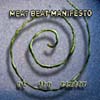 When I was in high school, my friends and I used to have thisdiscussion all the time about how Jack Dangers had such a signaturesound that he could take anyone else's song and remix it into somethingthat was unmistakably Meat Beat Manifesto. It shouldn't come as anysurprise then that some fifteen years later when Dangers has taken onthe task of producing a jazz record for Thirsty Ear, that the result still sounds like quintessential Meat Beat.
When I was in high school, my friends and I used to have thisdiscussion all the time about how Jack Dangers had such a signaturesound that he could take anyone else's song and remix it into somethingthat was unmistakably Meat Beat Manifesto. It shouldn't come as anysurprise then that some fifteen years later when Dangers has taken onthe task of producing a jazz record for Thirsty Ear, that the result still sounds like quintessential Meat Beat.Thirsty Ear
While jazz sampling and experimentation are nothing new to the MeatBeat catalog, this is the first record in a long and noteworthy careerthat is explicitly anchored more in the jazz tradition than in theworld of club music, hip hop, and dub. I should note that I don'tlisten to much jazz: I know what I like and numerous attempts to getinto jazz have just left me to conclude that the genre as a whole isnot really my cup of tea. However, a record like At The Centerexists to change that. Thirsty Ear has been building a catalog thatcould be described as "jazz for people who don't like jazz" by courtingpeople from the electronic music world and getting them to participatein 'The Blue Series.' Records from DJ Spooky, DJ Wally, Spring HeelJack and others have all found their way into my record collection asambassadors to a sound and style and tradition that I don't usuallyembrace. Of the Blue Series records I've heard, At The Centeris perhaps the one that manages to keep the most of its creator'soriginal identity in place while staying faithful to the intention ofthe project. This record is comprised of wiggly flute and clarinetpieces, upright bass, shuffling drum beats, playful stabs of piano, andodd samples—the usual. The sounds themselves aren't particularly newfor a Meat Beat release, but they are cleaner and less processed thanusual, giving the record much more of an improvised and live feel. Onlyone track is longer than six minutes, and that's perhaps the greatestsuccess for this record: that it manages to explore and stretch withoutgetting self-indulgent the way some jazz does. That's not to say therecord is made up completely of gems. There are two tracks with anextended recording of someone reading quirky want ads in a strangevoice, and while the tracks were funny the first or second time I heardthem, they drag on after many more listens. However, astute listenerswill hear some faint recycling of jazz touches and melodic phrases fromolder Meat Beat records worked into the fray and that kind ofself-sampling even when the instruments are being played live is sonecessarily Meat Beat Manifesto that the record ultimately breezes pastany low points. At The Center makes genre and style irrelevantto the equation of enjoying music, and that's what it's all about inthe end. Like many other talented multi-instrumentalists and composers,the result of the work is less about songs that fulfill a stylisticpromise and more about their creator's will imposing itself regardlessof the format, rules, or expectations. That Dangers is backed by atalented gang of players only makes the disc that much more of asuccess.
samples:
Read More
- Administrator
- Albums and Singles
Over the past fewyears, Sweet has recorded and released a clutch of CD-Rs under variousproject names—Boduf Songs, Randolph Carter, Pistols at Dawn WithAfterglow, Four Man Ghost, Heavy Manufacturing Concern, History ofElectricity, Map of Hell—some strictly solo affairs and some with asmall cast of collaborators. Sweet has been toiling away in almosttotal obscurity at his home in Southampton, England, producing animpressive catalog of releases, all with lovely handmade packaging, andmost with startlingly distinctive musical content. When I firstreceived the package from Blue Baby Recordings, full of eye-poppinghandmade collage covers, each with its own distinct visualaesthetic—hand-stamped inserts, xeroxed booklets, intricatetypography—I was impressed by Sweet's dedication to his art. When Ibegan to listen, I was struck not only by the unusual level of qualitycontrol exercised throughout each release, but also by the fact thatSweet's work has remained a secret for this long, in an age whenunderground, do-it-yourself CD-R labels have been blessed with hipstercache' and critical acclaim. While The Wire's David Keenan andhis Volcanic Tongue distribution company wanks all over the newest CD-Rof pointless, boring drone from some untalented, unshavenfree-folk-noise outfit from the bowels of a nameless American suburb, alabel like Blue Baby Recordings, right in his backyard, is completelyignored. All that is set to change this coming October, when Krankyreleases the self-titled Boduf Songs album, which is sure to bring somewell-deserved attention to Sweet and his other projects. Be sure tocheck out the great artwork and design at Blue Baby's website, whereCD-R releases can be ordered for extremely reasonable postpaid prices.Just don't forget that you heard it here first.
Randolph Carter, "Easter Parade"
Blue Baby Recordings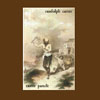 Randolph Carter was one of author H.P. Lovecraft's most memorableprotagonists, a man so frightened by the sudden, unexplainable death ofhis companion that he could only provide sketchy details on thenameless ancient horror they both glimpsed at night in a catacombs,amidst foul miasmal vapors issuing from an open sepulcher. The music ofRandolph Carter is similarly unspeakable, a collection of chillingambient soundscapes each darker and more nebulous than the last,creaking machines and rumbling undercurrents of noise, strangevibrations bubbling up from the core of a dying star. It's a noiserecord, but one that relies on the subtle creation of insistent dread,rather than aggressive squalls of feedback, for its effect. It's moreakin to early work by Lustmord or SPK than the familiar cadre' ofmodern noise artists, but there is a thread of subtle beauty runningthrough these compositions as well. It's anyone's guess what kind ofgear was used to create these effects, but there seems to be some usageof analog synthesizers and a variety of effects pedals, as well as(maybe) some tape effects. The elements pile on top of each other,creating an appealingly suggestive low-fidelity tangle of sound, inwhich one can pick out backwards-masked voices, animal sounds,chattering machines, and other sounds which may or may not actually bepresent. On "The 9th Duke, Manifest In All His Insufferable Beauty," aresounding, earth-pounding heartbeat forms a cataclysmic rhythm, while"Nero Is My Lover" is the soundtrack to an erotic nightmare about aTesla coil. The H.P. Lovecraft influence can be felt on a track like"I'm Clipping Your Wings," a yawning cave echoing with thereverberating groans of some hoary demon releasing foul, malodorousbelches while bathing in a sea of entrails. "One Who Glistens Horribly"sounds like the opening kettle drum fanfare for the commencement of aweird Witches Sabbath rite performed at the edge of a volcano. Much of Easter Paradeis utterly nightmarish, and I was left awestruck, watching amorphous,necrophagous shadows dance beneath an accursed waning moon.
Randolph Carter was one of author H.P. Lovecraft's most memorableprotagonists, a man so frightened by the sudden, unexplainable death ofhis companion that he could only provide sketchy details on thenameless ancient horror they both glimpsed at night in a catacombs,amidst foul miasmal vapors issuing from an open sepulcher. The music ofRandolph Carter is similarly unspeakable, a collection of chillingambient soundscapes each darker and more nebulous than the last,creaking machines and rumbling undercurrents of noise, strangevibrations bubbling up from the core of a dying star. It's a noiserecord, but one that relies on the subtle creation of insistent dread,rather than aggressive squalls of feedback, for its effect. It's moreakin to early work by Lustmord or SPK than the familiar cadre' ofmodern noise artists, but there is a thread of subtle beauty runningthrough these compositions as well. It's anyone's guess what kind ofgear was used to create these effects, but there seems to be some usageof analog synthesizers and a variety of effects pedals, as well as(maybe) some tape effects. The elements pile on top of each other,creating an appealingly suggestive low-fidelity tangle of sound, inwhich one can pick out backwards-masked voices, animal sounds,chattering machines, and other sounds which may or may not actually bepresent. On "The 9th Duke, Manifest In All His Insufferable Beauty," aresounding, earth-pounding heartbeat forms a cataclysmic rhythm, while"Nero Is My Lover" is the soundtrack to an erotic nightmare about aTesla coil. The H.P. Lovecraft influence can be felt on a track like"I'm Clipping Your Wings," a yawning cave echoing with thereverberating groans of some hoary demon releasing foul, malodorousbelches while bathing in a sea of entrails. "One Who Glistens Horribly"sounds like the opening kettle drum fanfare for the commencement of aweird Witches Sabbath rite performed at the edge of a volcano. Much of Easter Paradeis utterly nightmarish, and I was left awestruck, watching amorphous,necrophagous shadows dance beneath an accursed waning moon.
samples:
- The 9th Duke, Manifest In All His Insufferable Beauty
- I'm Clipping Your Wings
- One Who Glistens Horribly, Like an Insect
Map of Hell
Blue Baby Recordings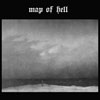 Map of Hell makes slow-motion doom metal that should please thenewfound legions of post-Nordic sludge enthusiasts currently clamoringover records by Earth, Sunn O))), Khanate and Black Boned Angel. UnlikeRandolph Carter, Map of Hell is a full group: M. Sweet on guitar, CliveHenry on "deathgrunt" and unknown quantities bass and drums. MOH'sparticular brand of crushing death rock is a bit more tuneful and lessabstract than the aforementioned acts, and their lengthy excursionstend to stay grounded in something approaching melody and forwardmomentum, but the low-fidelity recording style constantly pushes theband's considerable bottom-end into the red zone of distortion. Thiscreates ugly squalls of noise that obscure the group's dynamics,forcing attention onto the compounding sediment that clings to everydowncast riff, accompanied by what vocals that sound like thedisembodied roars of a giant robotic lion with its tail being held to aflame. The drumming is the most impressive element, reigning in thechaotic spray of muddy guitar noise, creating an insulatingarchitecture amidst the poisonous, choking smoke filling the air. It'san undeniably hellish concoction that thankfully does not wear out itswelcome by the 32-minute mark, though I must admit that I might alreadybe tired of the whole "subterranean metal" subgenre at this point. Istill think that there are some unparalleled classics of thegenre—Earth's Extra-Capsular Extraction and Sunn O)))'s White 1—thatI will probably enjoy forever, but the sheer amount of this stuff beingreleased right now can't help but cheapen even a sincere effort likeMap of Hell's debut, though it's worth noting that this album wasrecorded back in 2002, well before the crest of the wave. The linernotes contain some cut-ups that contribute thematic justification tothe relentlessly negative riffage on the album, not that you everreally need an excuse to wallow in a pit of twisted, low-end metaldebris.
Map of Hell makes slow-motion doom metal that should please thenewfound legions of post-Nordic sludge enthusiasts currently clamoringover records by Earth, Sunn O))), Khanate and Black Boned Angel. UnlikeRandolph Carter, Map of Hell is a full group: M. Sweet on guitar, CliveHenry on "deathgrunt" and unknown quantities bass and drums. MOH'sparticular brand of crushing death rock is a bit more tuneful and lessabstract than the aforementioned acts, and their lengthy excursionstend to stay grounded in something approaching melody and forwardmomentum, but the low-fidelity recording style constantly pushes theband's considerable bottom-end into the red zone of distortion. Thiscreates ugly squalls of noise that obscure the group's dynamics,forcing attention onto the compounding sediment that clings to everydowncast riff, accompanied by what vocals that sound like thedisembodied roars of a giant robotic lion with its tail being held to aflame. The drumming is the most impressive element, reigning in thechaotic spray of muddy guitar noise, creating an insulatingarchitecture amidst the poisonous, choking smoke filling the air. It'san undeniably hellish concoction that thankfully does not wear out itswelcome by the 32-minute mark, though I must admit that I might alreadybe tired of the whole "subterranean metal" subgenre at this point. Istill think that there are some unparalleled classics of thegenre—Earth's Extra-Capsular Extraction and Sunn O)))'s White 1—thatI will probably enjoy forever, but the sheer amount of this stuff beingreleased right now can't help but cheapen even a sincere effort likeMap of Hell's debut, though it's worth noting that this album wasrecorded back in 2002, well before the crest of the wave. The linernotes contain some cut-ups that contribute thematic justification tothe relentlessly negative riffage on the album, not that you everreally need an excuse to wallow in a pit of twisted, low-end metaldebris.
samples:
- Further Remarks on the Doctrine of the Vanity of Existence and the Suffering of the World
- The Eternal Silence of These Infinite Spaces Terrifies Me
Pistols At Dawn With Afterglow, "No Songs of Birds, No Rustle" and "Your Own Heaven Is Smoking, And Your Clouds Are On Fire"
Blue Baby Recordings Pistols At Dawn With Afterglow create lengthy compositions, stretchingorganic drones and loops across the entire length of an album, withsubtle acoustic elements nudging their way in, lonely almost-melodiesthat bubble up and dissipate, leaving a trail of ghostly echoes intheir wake. On No Songs of Birds, No Rustle,an eerie drone keeps cycling around, rudely sputtering every time itbegins anew, sparsely decorated at unpredictable intervals withreverberating guitar notes, the bowing of a cello, or tiny pockets ofanalog glitch. Each of these elements disturbs the calm ever soslightly, sending out rippling echoes over the placid surface of thepastoral drone, the tiny waves intersecting and bouncing off of eachother, subtly changing frequency and wavelength, creating tiny,compelling microtonal events. Half an hour into the piece, when I beganto hear what sounded like someone sighing into a harmonica, it seemedlike it arrived exactly at the perfect time, just as it should have.PADWA is the improvising duo of M. Sweet and Clive Henry, who togetherseem to have an uncanny knack for creating compositions that graduallyreveal their treasures; beginning minimally, slowly coaxing outharmonious swells of sound. By the last few minutes of No Songs of Birds,the piece has become nearly overwhelmingly gorgeous, a thick blanket ofpregnant, vibratory cello drones with slow, uncomplicated melodiesshimmering in the surrounding atmosphere. Your Own Heaven Is Smokinguses a very similar palette and working method, but arrives increpuscular territory. The backbone of the album's first track is arumbling, uncertain drone that feels warm, wet and plugged in,nervously shaking as ghostly tones snake lazily around its cracklingfield of electromagnetism. Track two is even more adrift in theinterstices of ancient circuitry, much of the sound occurring justbeyond the threshold of cohesiveness, with only the chirping ofcrickets echoing out across a dusty desert at night to remind me of mygeneral location in spacetime.
Pistols At Dawn With Afterglow create lengthy compositions, stretchingorganic drones and loops across the entire length of an album, withsubtle acoustic elements nudging their way in, lonely almost-melodiesthat bubble up and dissipate, leaving a trail of ghostly echoes intheir wake. On No Songs of Birds, No Rustle,an eerie drone keeps cycling around, rudely sputtering every time itbegins anew, sparsely decorated at unpredictable intervals withreverberating guitar notes, the bowing of a cello, or tiny pockets ofanalog glitch. Each of these elements disturbs the calm ever soslightly, sending out rippling echoes over the placid surface of thepastoral drone, the tiny waves intersecting and bouncing off of eachother, subtly changing frequency and wavelength, creating tiny,compelling microtonal events. Half an hour into the piece, when I beganto hear what sounded like someone sighing into a harmonica, it seemedlike it arrived exactly at the perfect time, just as it should have.PADWA is the improvising duo of M. Sweet and Clive Henry, who togetherseem to have an uncanny knack for creating compositions that graduallyreveal their treasures; beginning minimally, slowly coaxing outharmonious swells of sound. By the last few minutes of No Songs of Birds,the piece has become nearly overwhelmingly gorgeous, a thick blanket ofpregnant, vibratory cello drones with slow, uncomplicated melodiesshimmering in the surrounding atmosphere. Your Own Heaven Is Smokinguses a very similar palette and working method, but arrives increpuscular territory. The backbone of the album's first track is arumbling, uncertain drone that feels warm, wet and plugged in,nervously shaking as ghostly tones snake lazily around its cracklingfield of electromagnetism. Track two is even more adrift in theinterstices of ancient circuitry, much of the sound occurring justbeyond the threshold of cohesiveness, with only the chirping ofcrickets echoing out across a dusty desert at night to remind me of mygeneral location in spacetime.
samples:
Four Man Ghost, "I" and "II"
Blue Baby Recordings Four Man Ghost is yet another group, this one consisting of M. Sweet ondrums, Clive Henry on guitar and another unidentified human playingbass. The music made by Four Man Ghost is probably the moststraightforward of any to be found on the Blue Baby imprint: apost-rock trio that keeps rhythm and melody at the forefront at alltimes. The interplay of this trio of musicians is quiet and deceptivelysimple. Though I must admit I wasn't initially bowled over by theinsistent plainness of tracks like "Elizabeth Constance Byrd" uponfirst listen, I slowly realized that Four Man Ghost make their biggestmark by what they do not do: by the notes they leave unplayed. Thegroup is remarkably consistent at slowly building drama and intensityby deliberately refusing to fill every silence with extraneouscomposition and aimless soloing. This can sometimes lead tocompositions that build slowly and rely on repetition, but the resultsare more often than not quite gorgeous and hypnotizing. Songs oftentake six to eight minutes to run their course, meandering lazilythrough metronomic rhythms, subtle tempo changes and cyclical melodiesthat gather complexity as they revolve. Though the group consists ofonly three, the fourth man of the title might very well be a ghostlypresence, as most of the tracks are named after historical personagessaid to haunt various locations in Great Britain. There does seem to bea slight ghostly presence on some tracks, in the form of ripplingundercurrents of drone and creepy atmospherics. This is even moreobvious on FMG's second album, which is mostly a solo affair, M. Sweetplaying most of the instruments, utilizing overdubs, with C. Henryhelping out on a few tracks. While the music is no less precise andmelodic, songs are matched with electronic textures of esoteric origin,often upstaging the simplistic melodies. There is also a stronger senseof "room tone" on many of these tracks, with the rudimentary recordingequipment and impromptu overdubs bleeding through, creating a charming,low-fidelity quality. Both FMG albums end just as they are becomingtiresome, which is more than I can say for the last Tortoise album.
Four Man Ghost is yet another group, this one consisting of M. Sweet ondrums, Clive Henry on guitar and another unidentified human playingbass. The music made by Four Man Ghost is probably the moststraightforward of any to be found on the Blue Baby imprint: apost-rock trio that keeps rhythm and melody at the forefront at alltimes. The interplay of this trio of musicians is quiet and deceptivelysimple. Though I must admit I wasn't initially bowled over by theinsistent plainness of tracks like "Elizabeth Constance Byrd" uponfirst listen, I slowly realized that Four Man Ghost make their biggestmark by what they do not do: by the notes they leave unplayed. Thegroup is remarkably consistent at slowly building drama and intensityby deliberately refusing to fill every silence with extraneouscomposition and aimless soloing. This can sometimes lead tocompositions that build slowly and rely on repetition, but the resultsare more often than not quite gorgeous and hypnotizing. Songs oftentake six to eight minutes to run their course, meandering lazilythrough metronomic rhythms, subtle tempo changes and cyclical melodiesthat gather complexity as they revolve. Though the group consists ofonly three, the fourth man of the title might very well be a ghostlypresence, as most of the tracks are named after historical personagessaid to haunt various locations in Great Britain. There does seem to bea slight ghostly presence on some tracks, in the form of ripplingundercurrents of drone and creepy atmospherics. This is even moreobvious on FMG's second album, which is mostly a solo affair, M. Sweetplaying most of the instruments, utilizing overdubs, with C. Henryhelping out on a few tracks. While the music is no less precise andmelodic, songs are matched with electronic textures of esoteric origin,often upstaging the simplistic melodies. There is also a stronger senseof "room tone" on many of these tracks, with the rudimentary recordingequipment and impromptu overdubs bleeding through, creating a charming,low-fidelity quality. Both FMG albums end just as they are becomingtiresome, which is more than I can say for the last Tortoise album.
samples:
Heavy Manufacturing Concern, "Ausserhalb Under Erasure" and "All Language Is A Drunk Goddess In My Mouth"
Blue Baby Recordings Heavy Manufacturing Concern is M. Sweet working solo with an array ofanalog noisemakers, and it appears to be the project name reserved forhis most abstract and exploratory work. As HMC, he creates lengthysoundscapes full of warm, outdated factory machines throbbing noisilyalong with the rhythms of alternating electrical current. Ausserhalb Under Erasuresounds not unlike the sort of records that Beequeen were releasingseveral years back: oddly suggestive albums made up of dusty drones andatmospheres seemingly recorded in abandoned hospitals, disused militarybunkers and vast, uninhabited space stations. There are all manner ofghosts and strange chirping, electrical homunculi inhabiting themachines of Ausserhalb, chewing holes in the wires and pullinglevers to make the machine spin out of control. It's an album for deeplistening on headphones, with its fictional machine soundscapescaptured so vividly that they recall the finest of Nurse With Wound orCyclobe. The outstandingly named All Language Is A Drunk Goddess In My Mouthcontains one long piece, an exercise in reigning in static and whitenoise, creating psychedelic whirlpools of thought-cancelling noise,tunneling through your cerebellum, making way for a new imprintation ofreality. In the midst of all of these staccato detonations of mind-fog,you could almost miss the dark melody pushed far into the background,sounding like a reverberating church organ playing the love theme from Twin Peaks: Fire Walk With Me.It's a gloriously fucked sound, moving through a series of dark tonalshifts until it finally reaches down into a very dark place to finallyclaim your soul for good. Don't fight it.
Heavy Manufacturing Concern is M. Sweet working solo with an array ofanalog noisemakers, and it appears to be the project name reserved forhis most abstract and exploratory work. As HMC, he creates lengthysoundscapes full of warm, outdated factory machines throbbing noisilyalong with the rhythms of alternating electrical current. Ausserhalb Under Erasuresounds not unlike the sort of records that Beequeen were releasingseveral years back: oddly suggestive albums made up of dusty drones andatmospheres seemingly recorded in abandoned hospitals, disused militarybunkers and vast, uninhabited space stations. There are all manner ofghosts and strange chirping, electrical homunculi inhabiting themachines of Ausserhalb, chewing holes in the wires and pullinglevers to make the machine spin out of control. It's an album for deeplistening on headphones, with its fictional machine soundscapescaptured so vividly that they recall the finest of Nurse With Wound orCyclobe. The outstandingly named All Language Is A Drunk Goddess In My Mouthcontains one long piece, an exercise in reigning in static and whitenoise, creating psychedelic whirlpools of thought-cancelling noise,tunneling through your cerebellum, making way for a new imprintation ofreality. In the midst of all of these staccato detonations of mind-fog,you could almost miss the dark melody pushed far into the background,sounding like a reverberating church organ playing the love theme from Twin Peaks: Fire Walk With Me.It's a gloriously fucked sound, moving through a series of dark tonalshifts until it finally reaches down into a very dark place to finallyclaim your soul for good. Don't fight it.
samples:
Read More
- Administrator
- Albums and Singles
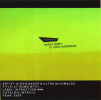 Infraction has been a label to watch for some time. With each newrelease the label showcases a list of consistently excellent artistswhom are always trying to bend sound towards new pleasures.
Infraction has been a label to watch for some time. With each newrelease the label showcases a list of consistently excellent artistswhom are always trying to bend sound towards new pleasures.Infraction
According to their website, Ultra Milkmaids have been around for overten years, starting as a punk band and slowly evolving towardsinstrumental rock and hazier musical ventures that has culminated onthis disc with Aidan Baker, someone that should be familiar if properattention has been paid. The disc begins as though a blanket is beingdrawn across the sky and an eternal night is ready to spread its jawover the world — the music is sleepy and soft, buzzing with the warmthof dying guitars. A brief silence ensues and then, as though a chesthas been ripped open during surgery, the movement of blood, the pumpingof the heart, the magnified movement of a million cells, and thetwitching ache of sedated muscle become obvious and the yawning guitarstake on a far more involved texture, scratching and extending into thebody and eviscerating it. The sound isn't threatening, it's simply andbeautifully observational, like watching the wonder of the human bodyat work with every detail focused and steady. The album changesdrastically over its three tracks, the second being the most loving andgentle.. "Stretched Guitars Lie Slo" bleeds and sweeps in a cloud ofhumming keyboards, bubbling melody, and the march-like pulse of a snaredrum crackling slowly in the background. Much like watching the flightof a large bird, the music is epic and soft in its contours, turns, anddives. No sound seems capable of overpowering the other and, as aresult, it's possible to think that this record can't possibly bechanging, that it's melodic and textural movement is pure illusion.I've not been this immediately captivated by a record of this sortsince I began listening to electronic music. It encompasses everythingI've always thought should happen on a record of this kind - majestic,careful melody aimed high and backed by the most subtle of variationscombined with emotionally gripping or familiar sounds. The closingtrack brings everything down with a clothed shine, the color of yellowand dreamed-white awash with microscopic activity. Each second on At Home With...is granular, almost tangible in its spectral movement. It issimultaneously cosmic and biological, providing a panorama or arch thatbegins in the body and ends somewhere in space.
samples:
Read More
- Administrator
- Albums and Singles
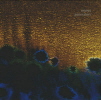 Few records have the severity of depth that this one carries with it:developing and fluid in its every contour, ever-present, but alwayshiding behind the shape of a shadow. There is no resting point, nosound or simple feeling that these four pieces lean on in order tocarry out their miles-deep melancholy.
Few records have the severity of depth that this one carries with it:developing and fluid in its every contour, ever-present, but alwayshiding behind the shape of a shadow. There is no resting point, nosound or simple feeling that these four pieces lean on in order tocarry out their miles-deep melancholy.Die Stadt
As "Sleep" begins there is a suggestion made, a hypnotic motionmeant only to seduce the mind into the belief that Darren Tate andColin Potter are intent on relaxing muscle and slowing brain activityto a crawl. The hum of electronics blows easily until randomsounds—coughing, restlessness, twisting and turning—bolt through thestill waters of the track. Slowly developing melodic themes, almost toodistant to piece together, stretch from their slumber and begin a slowcrawl through the lamp-lit streets that are at the very heart of Generators.This is a dream record through and through. All around is anenvironment of places and the energy they emit: a spider crawling alongits web musically, the unearthly buzz of fluorescent light, a lonefigure standing still beneath it, everything awash with darkundulations, like the movement of the ocean. The slow, deliberate pulseof the album delivers a suffocating atmosphere with a strange sense ofdensity. The sounds slowly congeal, pressed by gravity and necessity,to a mass that is ultimately crushing. As "Slowly Fading" slips awayinto silence, there is a mood left behind that cannot be lifted easily.The whole of the 2nd CD, entitled "The Black Sea," is a radiantbubbling of all that dark material, the introverted dreamscape of the1st CD, made flesh and blood. Printed inside this beautiful gate-foldcase is the word "still." Generators does exhibit a stillness,a strange freeze frame of moments inundated with uncomfortablethoughts, but it achieves this effect with variation as its mantra. Thehowling, moaning, wind-blasted end carries with it a sense of illusionthat has every scene suddenly infused with shock and tense silence. Generatorslives up to its name, conducting a psychological, frozen horror in itsprogression. The simplest image, like that of an orange hanging from atree, becomes loaded and awkward under this album's impression.
samples:
Read More
- Administrator
- Albums and Singles
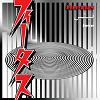 While the cover of this album is headache-inducing (a dizzying designusing the usual black, white and red motif), the musical contentmassages the brain's pleasure centers. The deviant pleasure centers.
While the cover of this album is headache-inducing (a dizzying designusing the usual black, white and red motif), the musical contentmassages the brain's pleasure centers. The deviant pleasure centers.Birdman
While most artists start to show cracks at this stage in their career,Jim Thirlwell continues to churn out quality recordings. He has thegift of taking lyrics that would be corny in any other singer's mouthand turning them into barbed lines of genius, see "Aladdin Reverse" forsome prime examples. The music also shows how Thirlwell can turn whatwould be cheesy (like the synth bass on "Miracle") into not quite goldbut maybe some good silver. Lovesounds like a bastardised soundtrack for a blockbuster. Epic soundingstrings, brass and thumping percussion being the weapons of choice."Time Marches On" is where Thirlwell went whole hog with the soundtrackvibe, an incessant snare drum pushes the track on and on as stringsplay dramatic arpeggios and horns blare out a tune that shouldaccompany Clint Eastwood on horseback. In recent interviews Thirlwellhas professed his love for Hollywood composers like Alan Silvestri andDanny Elfman and their influence is all over Love. Elements ofMorricone also stick out at certain points but it all still sounds likeFoetus. One of the highlights of the album is "Thrush," a duet withJennifer Charles of Elysian Fields. Her delicate voice locks inperfectly with Thirlwell's serial killer croak. The album's title isalso the main theme of the album. However in the world of Foetus loveis not that wholesome experience that is usually sung about but thelove between a man and a corpse. On "(Not Adam)" Thirlwell sings to aloved one to "Stop your raving cos the neighbors might be listening"and then describes her murder and how he has kept her body in his bed.With charm like that how can he go wrong? The other tracks all dealwith murder and pervy love to some degree. From musings about forensicevidence in "Miracle" to madness and ink blots in "Pareidolia," I won'tbe visiting Thirlwell after dark. Love is a relentless and brilliant album and for once I agree with Lennon and McCartney, all you need is Love.
samples:
Read More
- Administrator
- Albums and Singles
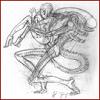 Massimo and Pierce are best known around these parts as the Ghost Boyswho formed part of Coil's live shows. They set up Black Sun Productionsas a multimedia enterprise and Operett Amorale is their latest audio venture.
Massimo and Pierce are best known around these parts as the Ghost Boyswho formed part of Coil's live shows. They set up Black Sun Productionsas a multimedia enterprise and Operett Amorale is their latest audio venture.Divine Frequency
The album is a tribute to the German poet and dramatist BertoltBrecht. Unlike most tributes to Brecht less than half the album is fromBrecht's famous collaborations with Kurt Weill. Massimo and Pierce'sartistic goals are very much in synch with Brecht's—all of their worksare decadent and subversive. The marriage between Black Sun Productionsand Brecht on this album works exceptionally well. Operett Amoraleis littered with guest artists including Lydia Lunch, H.R. Giger,Fabrizio Pallumbo (from (r) and Larsen) and Coil. The contribution fromCoil, "A List of Wishes," is one of Jhonn Balance's final studio works.It is an adaptation of one of Brecht's poems set to Sleazy's music. Thelilting beat is both evocative of Weimarer Republik era Berlinand Coil's own distinct sound. H.R. Giger provides both the cover artand his voice to "Seeraeuber-Jenny". The cover art is Giger's Alienmolesting a woman with its various appendages, I'm not quite sure howthat ties in with Brecht but it is impressive looking nonetheless.Pallumbo's style fits like a glove on this album. Tracks like "BrothelTango" sound like Larsen if Larsen were from twenties' Berlin. Pallumboperforms on most of the tracks with Massimo and Pierce. WhilstPallumbo's influence is evident it never overpowers the songs. The onething that lets the album down is Lydia Lunch's performance on "TheBallad of Sexual Dependency." Her delivery of the words is cringeworthy but then again, I have never been able to tolerate her pseudoart rubbish. Apart from that the rest of the CD is flawless. Massimoand Pierce's vocals are excellent, especially on "Pimp Ballad". Themusic complements their voices, many of the tracks sound like a bandthat have been playing these songs comfortably with each other foryears. Some of the tracks use samples of older recordings of Brecht'sworks, "Johnny Over the Sea" uses Gisela May's voice and "Ballade vonder Hoellenlili" uses Lotte Lenya (who won a Tony Award for one of herperformances as Jenny). This is one of the best tributes to Brecht andthe music of Weimar Berlin that I've heard in a long time. Unlike thediluted nature of Bobby Darin's "Mack The Knife," Black SunProductions' Operett Amorale embraces the sheer decadence andpleasure of the time and place whilst keeping it sounding modern andrelevant to today. Massimo and Pierce would have made Brecht proud.
samples:
Read More
- Administrator
- Albums and Singles
 It's been an exhausting voyage for the emotionally disconnectedastronaut of Odawas' debut release The Aether Eater. Just a glance atthe lyrics, with references to constellations, outer rings, Dante, andVirgil, proves that the Indiana trio has self-revelatory traveling ontheir minds.
It's been an exhausting voyage for the emotionally disconnectedastronaut of Odawas' debut release The Aether Eater. Just a glance atthe lyrics, with references to constellations, outer rings, Dante, andVirgil, proves that the Indiana trio has self-revelatory traveling ontheir minds.jagjaguwar
"The Astronaut" starts things off on a subdued note, as slowly chimingbells toll, an understated guitar and warped vocals slowly make theirway to the fore. Mike Tapscott, in his reedy warble, introduces us tothe protagonist who "spent his days walking the streets with violentthoughts." The astronaut is then launched into space on the next track,"If It Smells Like a Rain Cloud," as plinking keyboard riffs and simpledrums rocket him past strange worlds and stranger characters. Onseveral of these tracks, such as "The Golden Fog" or the childhoodtrauma of "Benjamin," Odawas sound much like fellow low-fi prog-poppersMt. Eerie. But where Mt. Eerie often sound like a reverberating oldgrowth forest, Odawas appear much grander and remote, as though theyare being beamed in as a far away signal. Elsewhere, the band engagesin some unique experimentation. "Songs of Temptation" rides a swingingpiano and a near smooth jazz sax. Along with the female backing vocalsthat echo throughout, it would not be such a lark to assume it were aDark Side of the Moon castoff. Most bizarre though is "Ant Man MessiahElijah," where a harpsichord backs up a near monologue that providessome of the best insights and poses some of the toughest questionsregarding Odawas' antihero. Behind heavily manipulated vocals, MikeTapscott declares "There are lights in the sky that have called me byname; the galaxy's secrets are whispered in rain." By the time Ireached "Virgil," I felt as though I had been gone for years and hadlanded in a world vaguely familiar yet distinctly different. Odawas'journey is an often confounding and challenging one, but it's one Iwon't soon forget.
samples:
Read More
- Administrator
- Albums and Singles
 This Argentinean trio breaks very little ground on their latest outingon Darla, and for the most part, this is fine by me. Lacking thecoke-fueled swagger of groups like Fischerspooner, Entre Rios come ofas kids who bought the textbook and read very closely.
This Argentinean trio breaks very little ground on their latest outingon Darla, and for the most part, this is fine by me. Lacking thecoke-fueled swagger of groups like Fischerspooner, Entre Rios come ofas kids who bought the textbook and read very closely.Darla
Their songs do everything I expect electro-pop to do: ride percolatingbeats; feature vocals that are coolly detached (or completelydisinterested depending on your point of view); and disappear from myconsciousness soon thereafter. The production here is smooth—likeSteely Dan playing on a Formica counter top smooth—something that soundengineer Gabriel Lucena can take pride in. On "Claro Que Sí," his beatsfloat and laze away behind singer Isol's icy detachment. It's a prettymoment of sugary pop on an album that at times can become overbearingin its sweetness. "De Tener" is similar in its execution, but featuresa strong chorus that keeps things interesting. While there is nothingparticularly wrong with Onda, their formulaic take on electro-popbecomes a bit grating and, well, boring. The tempos here rarely riseabove a mid tempo shuffle, which cause the songs to be bogged down in amid-paced mire. Furthermore, while their songs are sung in Spanish, abasic understanding of the language and a quick glance at the lyricsreveal that lyricist Sebastián Carreras' songs aren't exactly breakingany new ground in songwriting. Ultimately, what saves Entre Rios is thefact that they know they shouldn't be trying to stretch the boundariesof electro-pop. Onda knows it won't be shattering expectations orchanging any lives. Instead, it offers 11 pieces of clean, club-readybeats and breathy vocals. Whether you care enough to accept them isentirely up to you. - Nick Feeley
samples:
Read More
- Administrator
- Albums and Singles
 "Great," I thought as I opened this CD, "a movie soundtrack about a guywho runs around tagging in abandoned train yards and warehouses andstuff. HAS to be hip-hop, lots of down and dirty backpacker hip hop.Hopefully it'll be as relevant but less whiny than Sage Francis, aselemental but not as blunted as Madlib...wait, what the fuck? It's byKid Loco, Paris discothèque DJ, who spins trip hop and house to hordesof sweaty lycra and polyester wearing Eurotrash."
"Great," I thought as I opened this CD, "a movie soundtrack about a guywho runs around tagging in abandoned train yards and warehouses andstuff. HAS to be hip-hop, lots of down and dirty backpacker hip hop.Hopefully it'll be as relevant but less whiny than Sage Francis, aselemental but not as blunted as Madlib...wait, what the fuck? It's byKid Loco, Paris discothèque DJ, who spins trip hop and house to hordesof sweaty lycra and polyester wearing Eurotrash."Mettray Reformatory
Not only that, hesays it's good enough to be a stand-alone album, not just auralaccompaniment to the film. Having not seen the film, I really can't sayhow it functions as a soundtrack- but judging from the music, Mr. The Graffiti Artistis a dark and brooding chap, graffing buildings to a wandering andrepetitive vaguely Eastern sitar and woodwind motif. Recurring themesare apparent in the soundtrack's 80 minutes—the sitar and woodwinds,and a mournful calliope hooting behind a vaguely hip hop drumroll—meaning Loco may be using leitmotif—or he may just have ran out ofideas and mailed this one in. As far as atmospherics go, he's nailedthe seedy, nocturnal feel. You can almost feel the fog and darknesscoming out of the speakers when the Eastern instruments play. However,the calliope and drums aren't very emotive: with one exception, they'rebland and repetitive. The album does seem like it's building to somesort of climax at the very end, but instead of coming to any sort of apeak, the music drifts away, leaving, well, nothing. This may be aperfect backdrop to a post-modern urban nihilist film. This may be theweirdest and most ill-conceived pairing since Mr. T babysat JerryFalwell's kids. The film's perceived audience—kids in hoodedsweatshirts with Sharpies in their pockets and rap in theirheadphones—will probably think it's the latter. Loco is a finemusician, and some will probably enjoy the inoffensive musical banterhe provides here. Whether they will ever hear it—or hear it along withthe film—remains to be seen.
samples:
Read More

